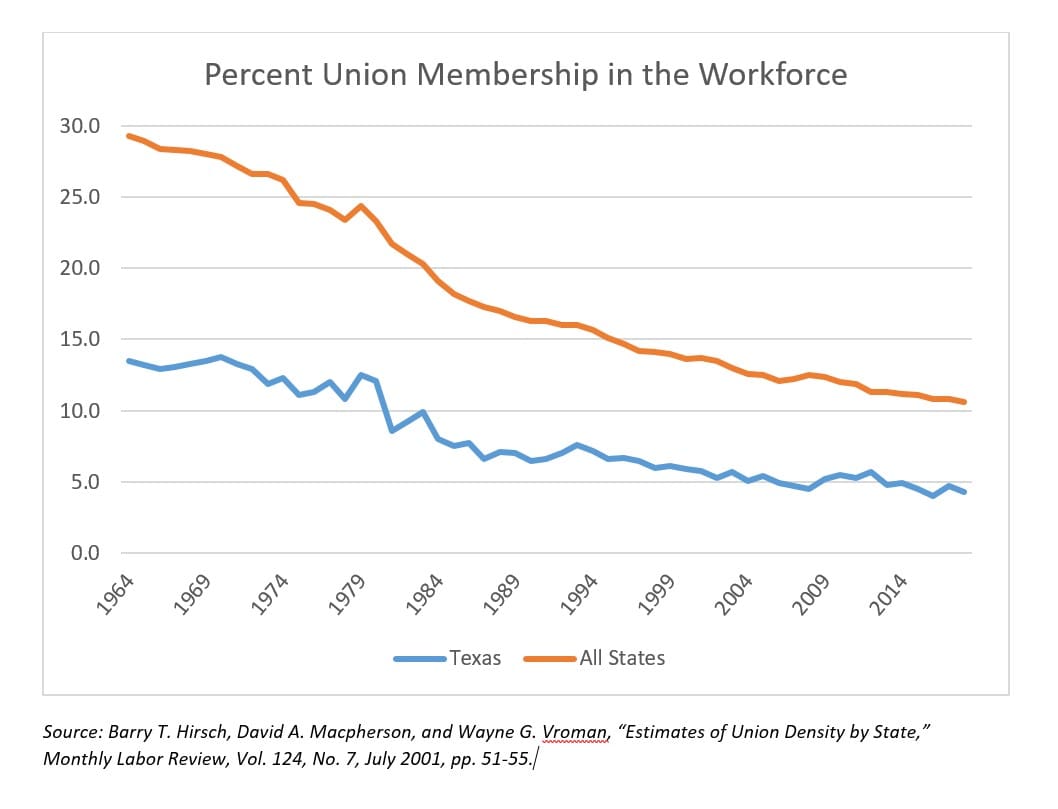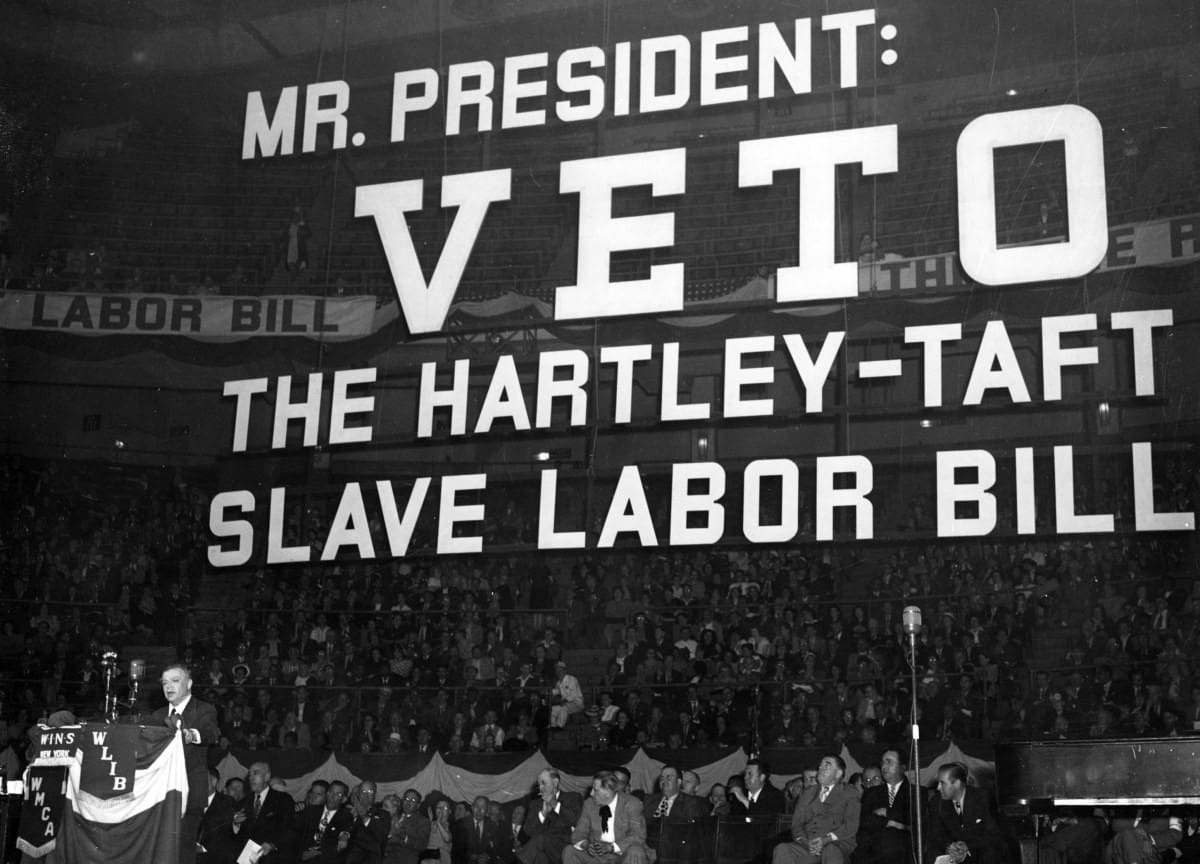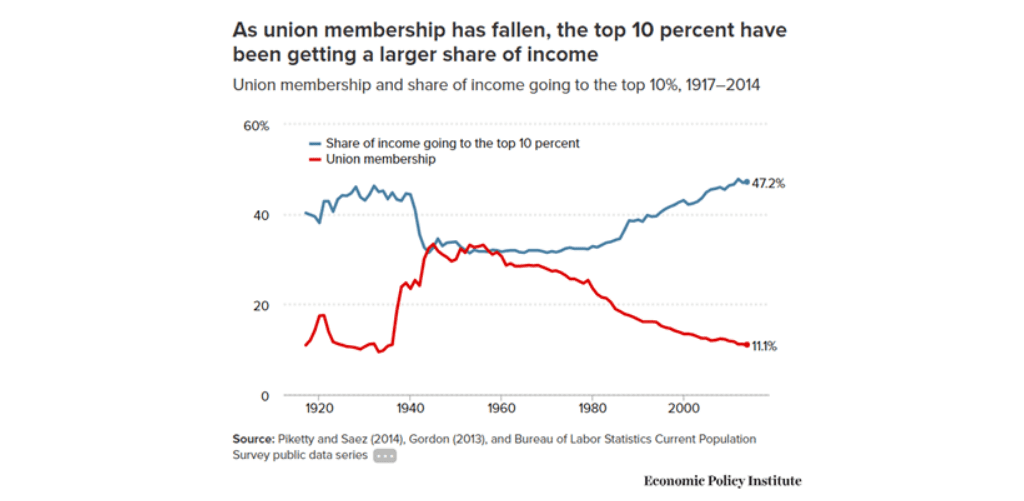Unions have played a critical role in our country to ensure that hard-working Americans are treated well and receive fair compensation for their labor. It’s no coincidence that as union membership took a drastic drop in our country, inequality skyrocketed.
The decline of union membership has made life harder for middle and working-class Americans through the loss of real wages, adequate health care coverage, and retirement savings. We still have not yet seen the full impact of these losses. As older adults approach retirement, our country will have to pay the price of reducing not only wages but also the elimination of pension programs. The collective voice of unions supported and negotiated these programs.

Unions provide protections for workers beyond just fair compensation. Unions negotiate and protect against, race, gender, and LGBTQ discrimination. They provide protection against sexual harassment in the workplace, whistleblower retaliation, unsafe work conditions, offer accommodations for workers with disabilities, and much more.
Unfortunately, union membership has been constantly declining since its peak in the early 1950s. While there are several factors that led to the decline in union membership, a significant blow came with the passage of the Taft-Hartley Act in 1947. This act, officially called the Labor Management Relations Act, placed heavy restrictions on organized labor.

Pamphlet cover, issued by the California CIO Council in July 1947
The Taft-Hartley Act restrictions included prohibitions on closed shops or workplaces where only union members could be hired. The Act also prohibited secondary boycotts, where unions showed solidarity for other striking unions by refusing to do work related to the business operations of that striking union. The act prohibited unions from using funds to support or oppose federal candidates, creating a significant power imbalance as corporations were not restricted in their ability to contribute to political campaigns. Additionally, the Taft-Hartley Act allowed states to pass “right-to-work” laws, which prohibit unions from requiring workers to pay dues protected by a union contract. Texas is among the 27 states to have passed such laws.

The anti-union movement is also deeply rooted in racism. Many White business owners met efforts to unionize in Southern states with great resistance, as they saw unions as threats tied to desegregation. The Southern States Industrial Council distributed propaganda with headlines reading, “Shall We Be Ruled by Whites or Blacks?” Anti-union leaders used fear tactics like this to turn White labor in the South, people who would have benefited greatly from union protections against the movement.
Unions today are broader and protect workers in industries not typically thought of as a union work, like blue-collar manufacturing labor. The protections for workers, including those that go beyond just salary and benefits, are becoming more and more necessary in professional workplaces. In recent years, unions have formed in workplaces where organized labor has not traditionally existed such as newsrooms full of highly educated reporters, and efforts to unionize have sprung up all across the country. These include graduate assistants at top tier universities and highly skilled workers in the tech industry. Even workplaces that are not driven by traditional profit maximization, such as non-profits like CPPP, are recognizing the value of a stronger voice from their staff and its ability to make a mission-driven organization stronger.
In order to remove barriers to human thriving in our country, we must return the balance of power to the hands of the hardworking individuals that drive our nation’s economy. Texas, with its high rates of income inequality, and low rate of health care coverage would see the benefits of expanded union membership spread among all Texans. Organized labor ensures that profits do not come before people or decent work opportunities. Without organized labor, it is harder for millions of our friends and neighbors to reach the American Dream.
[1] Union Members – 2019, Bureau of Labor Statistics, U.S. Department of Labor. https://www.bls.gov/news.release/pdf/union2.pdf
[2] CPPP Calculation based on data from: Union Members – 2019, Bureau of Labor Statistics, U.S. Department of Labor. https://www.bls.gov/news.release/pdf/union2.pdf
[3] Barry T. Hirsch, David A. Macpherson, and Wayne G. Vroman, “Estimates of Union Density by State,” Monthly Labor Review, Vol. 124, No. 7, July 2001, pp. 51-55.
